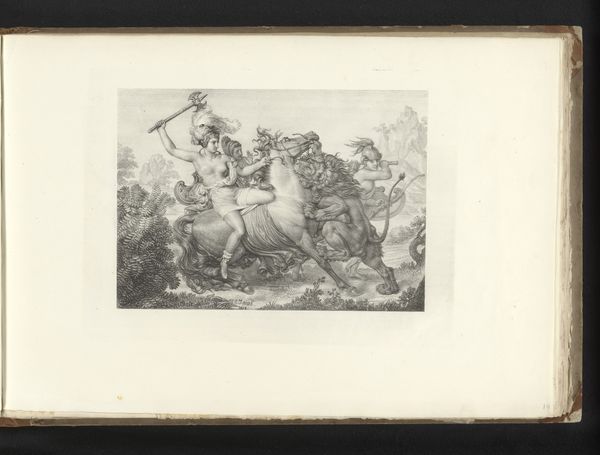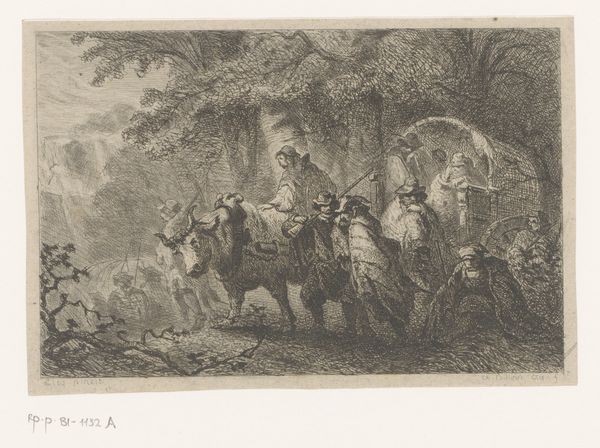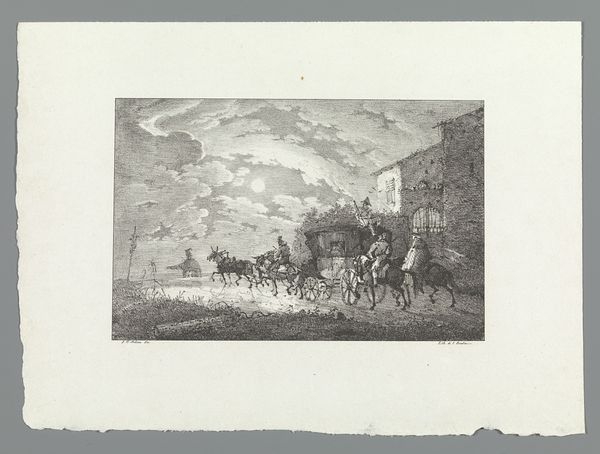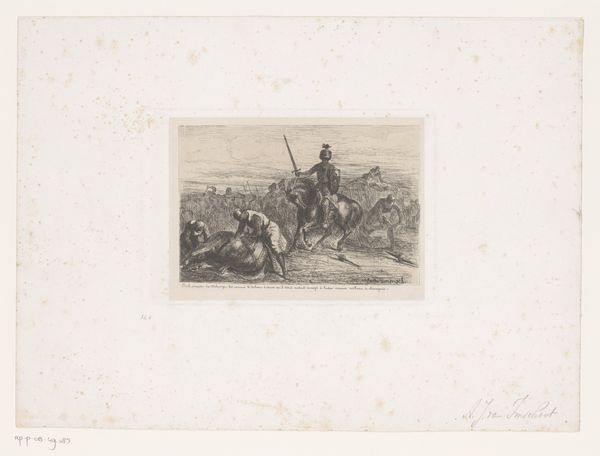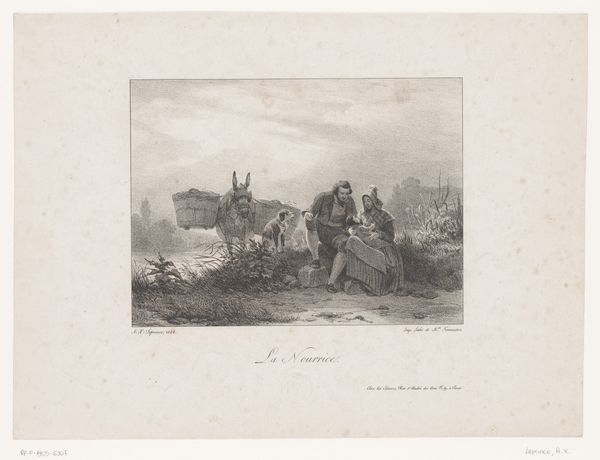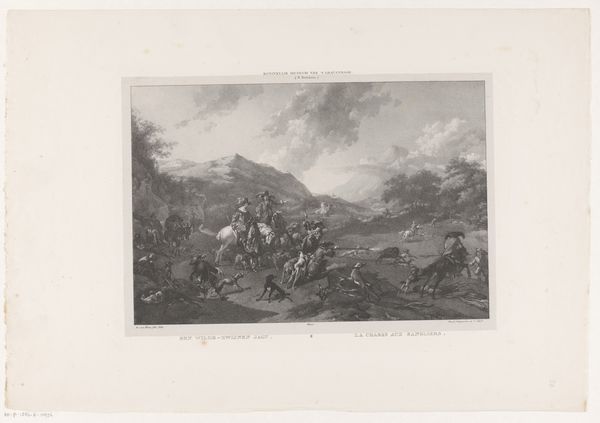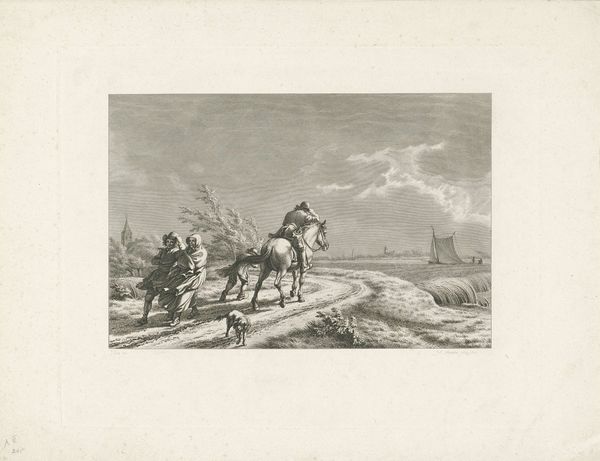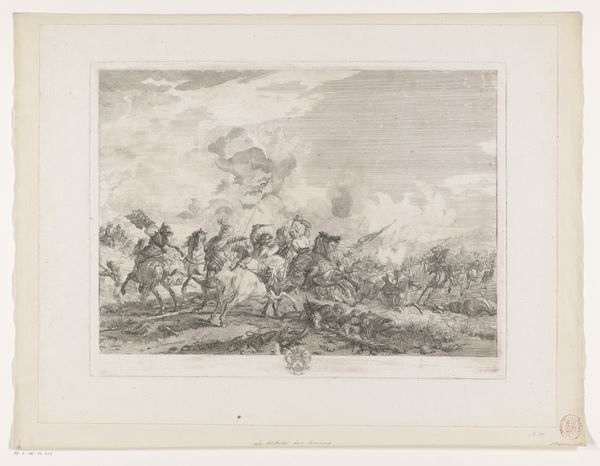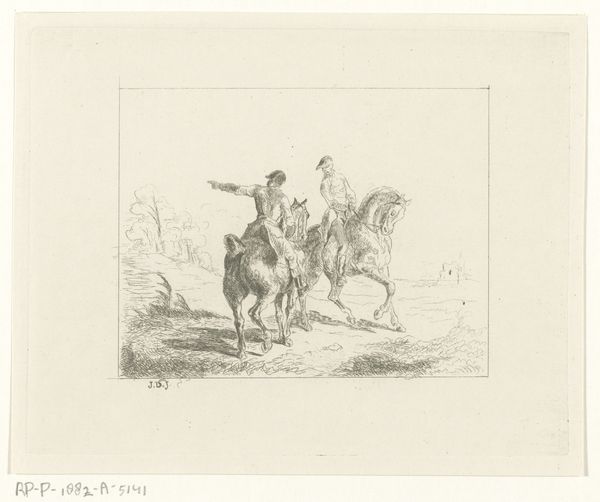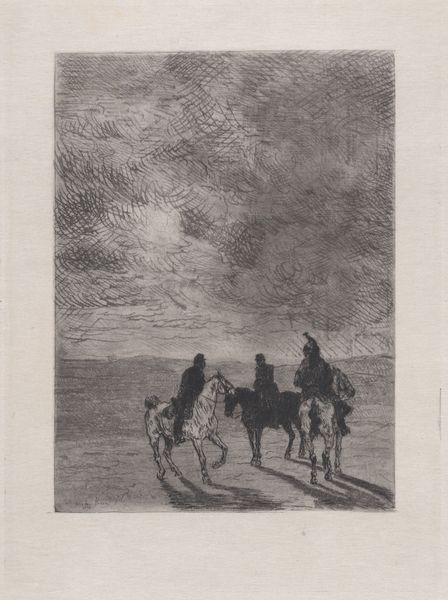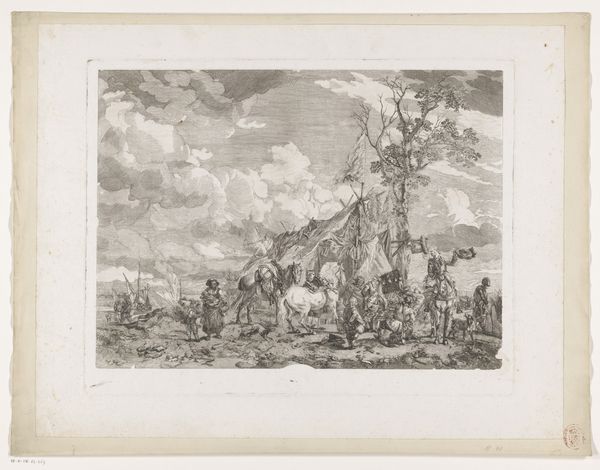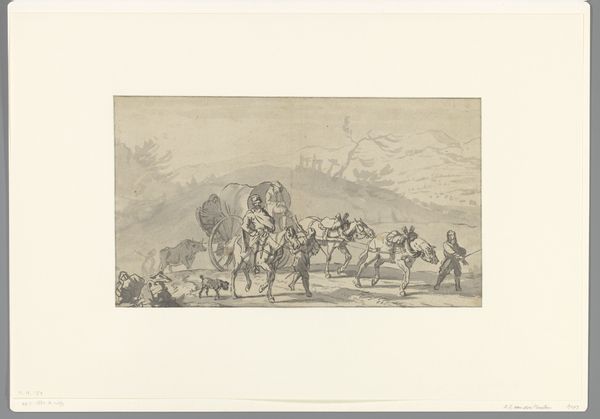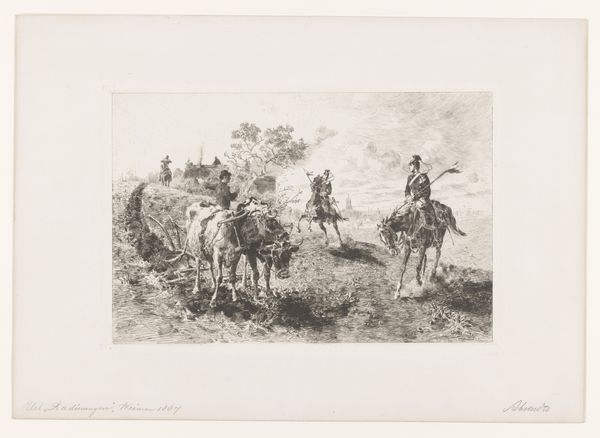
drawing, print, ink, engraving
#
drawing
# print
#
landscape
#
figuration
#
ink
#
romanticism
#
history-painting
#
engraving
Dimensions: height 231 mm, width 317 mm
Copyright: Rijks Museum: Open Domain
Curator: Before us we have Johann Georg Schinz's "Militairen te paard in de regen," made around 1822. It combines drawing and printmaking techniques, using ink and engraving to depict soldiers on horseback in a landscape setting. Editor: What immediately strikes me is the pervasive gloom. It feels incredibly somber, even a bit oppressive. The texture created by the engraving emphasizes the weight of the rain, and seems to convey a kind of quiet resignation. Curator: Indeed, the artistic skill in rendering such atmospheric conditions through lines and textures is quite masterful. The density of the engraving not only captures the rain but also evokes a sense of historical weightiness, appropriate considering the military theme. Editor: Absolutely. Thinking about the socio-political context, military imagery in this period was so often used as propaganda to bolster nationalist sentiment. This feels very different, though. It is not glorifying war; instead, the rain seems to wash away any potential bravado, reducing the soldiers to figures enduring hardship. Curator: It is tempting to explore it solely through a biographical lens – perhaps considering the artist's experiences – but the image speaks to larger principles of Romanticism: an embrace of emotional intensity and, formally, an attention to stark contrast. The darks aren’t just shading; they symbolize profound inner and external conflicts. Editor: And perhaps speaks to an emerging disenchantment of post-Napoleonic Europe. These soldiers, are they returning, defeated? Or simply on a patrol of no consequence? The ambiguity adds another layer. It is history, yes, but more than just the grand narratives. Curator: Precisely, focusing purely on the subject matter risks overlooking the intricate formalism. The lines, while seemingly representational, function as expressive devices conveying mood above narrative. The composition draws our eyes across the field to these figures. Editor: So, while the history books give us battles and treaties, an image like this offers a visceral, human experience of what it meant to live through a certain time, or after a certain conflict. It reminds us to look beyond the monuments. Curator: Agreed, looking beyond—or deeper within—the pictorial elements shows an orchestration of light, shadow, and texture. These soldiers might fade into historical obscurity, but this work etches a resonant image into our understanding of romantic expression.
Comments
No comments
Be the first to comment and join the conversation on the ultimate creative platform.
